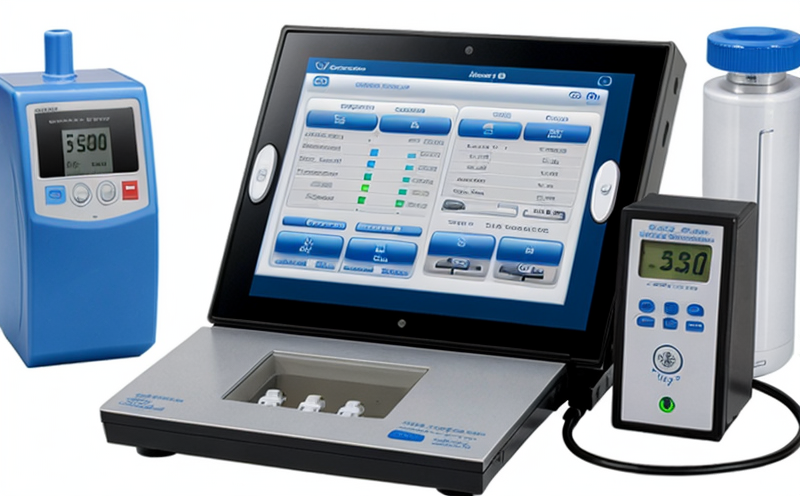ISO 8536 Infusion Set Particle Release Testing
The ISO 8536 infusion set particle release test is a critical procedure designed to evaluate the potential for particulate matter to be released into the bloodstream during the use of an infusion set. This test ensures that medical devices, particularly those used in drug delivery systems, meet stringent safety standards and do not pose risks to patients.
The infusion set particle release test is a part of comprehensive quality control measures aimed at safeguarding patient health by minimizing the likelihood of embolism formation due to particulate matter. It is a mandatory requirement for medical devices that fall under Class II or III according to the Medical Device Directives (MDD) and the In Vitro Diagnostic Medical Devices Regulation (IVDR).
The test involves simulating the conditions under which an infusion set would be used in clinical practice, including flow rates, pressures, and dwell times. Specimens are subjected to various stresses to assess their robustness and integrity. The primary objective is to ensure that even minimal particulate releases do not exceed safe thresholds.
The testing process typically involves the following steps:
- Preparation of the infusion set according to ISO 8536 standards
- Simulated use under defined conditions, including flow rates and pressures
- Analysis of particle release using appropriate filtration techniques
- Evaluation against predefined thresholds for acceptable particulate levels
The test is essential for ensuring that infusion sets used in critical medical applications are safe and reliable. By adhering to these rigorous testing protocols, manufacturers can demonstrate compliance with international standards and enhance patient safety.
ISO 8536 has been specifically designed to address the unique challenges faced by infusion set manufacturers. It provides a standardized approach for particle release testing that ensures consistency across different products and laboratories. This standardization is crucial for maintaining high-quality medical devices, which are critical in delivering effective healthcare.
The test's significance extends beyond ensuring individual product safety; it plays a vital role in the broader context of patient care. By reducing the risk of embolism and other complications associated with particulate matter, this testing contributes to improved patient outcomes and reduced healthcare costs.
In summary, ISO 8536 infusion set particle release testing is an indispensable part of ensuring that medical devices meet the highest safety standards. It provides a reliable method for evaluating potential risks and enhancing trust in medical technology.
Scope and Methodology
The ISO 8536 particle release testing protocol is designed to assess the extent of particulate matter that may be released into a patient's bloodstream during the use of infusion sets. This method involves simulating real-world conditions under which the infusion set will operate, ensuring accurate and reliable results.
The testing process begins with the preparation of the infusion set according to ISO 8536 specifications. The device is then subjected to various flow rates and pressures that mimic typical clinical use scenarios. Specimens are exposed to these conditions for a predetermined dwell time, allowing sufficient time for any potential particulate release.
Following exposure, the samples undergo filtration using appropriate techniques to capture any particles released during testing. The collected particles are then analyzed according to ISO 8536 guidelines, which specify acceptable levels of particulate matter based on particle size and concentration.
The methodology ensures that all infusion sets undergo consistent and reproducible testing, providing a reliable basis for assessing their safety and efficacy. This standardized approach is crucial for maintaining quality control in the medical device industry and ensuring patient safety.
Why Choose This Test
The ISO 8536 infusion set particle release test is a cornerstone of medical device quality assurance, offering numerous benefits to manufacturers and healthcare providers alike. By conducting this test, companies can ensure that their products meet the highest safety standards, thereby enhancing patient confidence and trust in their devices.
One of the primary reasons for choosing ISO 8536 particle release testing is its ability to identify potential risks early in the development process. This proactive approach allows manufacturers to address any issues before they reach clinical use, reducing the likelihood of recalls and product failures.
In addition to enhancing safety, this test also contributes to regulatory compliance. By adhering to ISO 8536 standards, companies can ensure that their products meet the requirements set forth by international regulatory bodies such as the FDA, EMA, and others. This compliance is essential for gaining market access in various regions.
The test's reliability and consistency are further enhanced through its standardized methodology. This ensures that results are reproducible across different laboratories and testing environments, providing a robust foundation for decision-making.
Moreover, the ISO 8536 particle release test helps manufacturers differentiate their products in a competitive market by demonstrating superior safety features. This can be particularly advantageous when marketing to hospitals, clinics, and other healthcare institutions that prioritize patient safety.
In conclusion, choosing ISO 8536 particle release testing is not just about meeting regulatory requirements; it's about setting a new standard of excellence in medical device quality assurance. By investing in this test, manufacturers can ensure the highest level of patient safety and satisfaction.





